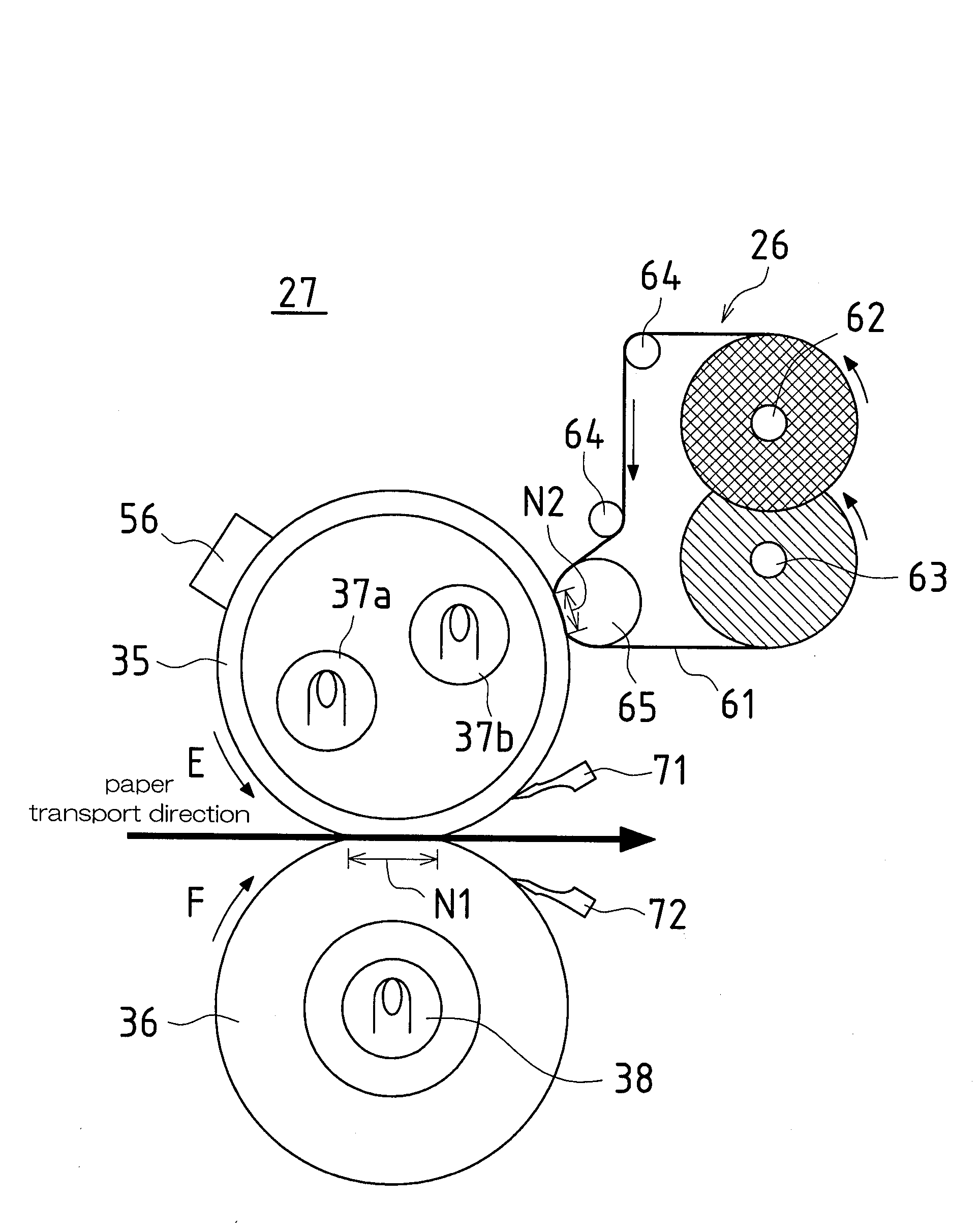Roller drive control method for fixing apparatus
a control method and technology of fixing apparatus, applied in electrographic process apparatus, instruments, optics, etc., can solve the problems of inability to clean the toner that adheres to the separation claw, inability to clean the web sheet, undetectable cleaning capability of the cleaning member of the cleaning unit, etc., to improve the cleaning efficiency of the cleaning unit for adhered toner and reduce the effect of adhered toner
- Summary
- Abstract
- Description
- Claims
- Application Information
AI Technical Summary
Benefits of technology
Problems solved by technology
Method used
Image
Examples
Embodiment Construction
[0032]Hereinafter, an embodiment of the present invention is described in detail with reference to the accompanying drawings.
[0033]—Overall Description of Image Forming Apparatus—
[0034]FIG. 1 is a schematic view of an image forming apparatus in which one embodiment of a fixing apparatus according to the present invention has been applied.
[0035]The image forming apparatus 100 obtains image data that has been read from an original paper or received from outside, and forms a monochrome image indicated by the image data on a recording paper, and its structure can be broadly divided into an original paper transport portion 101, an image reading portion 102, a print portion 103, a recording paper transport portion 104, and a paper feed portion 105.
[0036]When at least one sheet of an original paper is set in an original setting tray 11 in the original paper transport portion 101, the original paper is withdrawn and transported from the original setting tray 11 sheet by sheet, and the origi...
PUM
 Login to View More
Login to View More Abstract
Description
Claims
Application Information
 Login to View More
Login to View More - R&D
- Intellectual Property
- Life Sciences
- Materials
- Tech Scout
- Unparalleled Data Quality
- Higher Quality Content
- 60% Fewer Hallucinations
Browse by: Latest US Patents, China's latest patents, Technical Efficacy Thesaurus, Application Domain, Technology Topic, Popular Technical Reports.
© 2025 PatSnap. All rights reserved.Legal|Privacy policy|Modern Slavery Act Transparency Statement|Sitemap|About US| Contact US: help@patsnap.com



